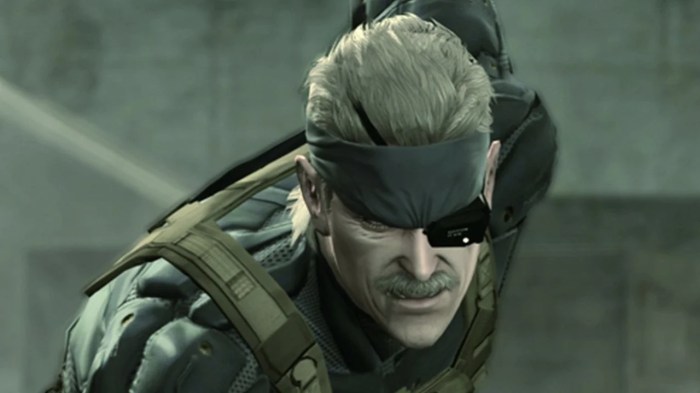The Mystery of Mission 51
Metal Gear Solid V: The Phantom Pain, released in 2015, was a highly anticipated title that promised to deliver a captivating conclusion to the long-running Metal Gear saga. However, the game’s abrupt ending left fans with more questions than answers, sparking endless speculation and theories about the existence of a missing Mission 51. This chapter in the Metal Gear Solid franchise is shrouded in mystery, leaving players to ponder what could have been.
The Development and Release of Metal Gear Solid V
The development of Metal Gear Solid V was marked by controversy and turmoil. The game’s director, Hideo Kojima, had a tumultuous relationship with Konami, the game’s publisher. Kojima’s creative vision for the game clashed with Konami’s desire for a more commercially successful product. These conflicts led to a public falling out between Kojima and Konami, ultimately resulting in Kojima’s departure from the company.
The game’s release was also marred by technical issues, including bugs and glitches that negatively impacted the gameplay experience. Despite these setbacks, Metal Gear Solid V received critical acclaim for its open-world design, stealth gameplay, and captivating story.
The Impact of the Game’s Ending on the Fanbase
The game’s ending left fans in a state of shock and confusion. The abrupt conclusion, which felt like a cliffhanger, raised questions about the fate of the characters and the overarching narrative. The lack of closure left a sour taste in the mouths of many players, who felt cheated out of a satisfying ending.
Theories and Speculation Surrounding Mission 51
The absence of Mission 51 has fueled speculation and theories among fans. Some believe that Mission 51 was cut from the game due to the conflict between Kojima and Konami. Others speculate that the mission may have been incomplete at the time of the game’s release and was never finished.
“The mission was almost complete, but it was cut short due to the conflict between Kojima and Konami.” – Fan theory
There is no concrete evidence to support the existence of Mission 51. However, the game’s ending and the behind-the-scenes drama surrounding its development have only added fuel to the fire of speculation.
Analyzing the Game’s Narrative
Metal Gear Solid V: The Phantom Pain is a complex and layered narrative, leaving many players with lingering questions and interpretations. While the game concludes with a sense of closure, certain elements within its narrative suggest a larger, unfinished story, possibly related to the missing Mission 51. Analyzing the game’s plot points, character motivations, and its ending in comparison to previous Metal Gear entries reveals potential foreshadowing and intriguing possibilities for the missing mission.
The Foreshadowing of Mission 51
Several plot points in Metal Gear Solid V hint at a larger narrative, potentially related to Mission 51. One key element is the enigmatic character of Eli, who embodies the potential for a different path for Big Boss. Eli’s existence as a potential alternative to Big Boss’s descent into darkness raises questions about the possibility of a different future for the protagonist. The game also features recurring themes of memory, identity, and the manipulation of history, suggesting that the truth behind Mission 51 may involve a deeper understanding of Big Boss’s past and the forces that shaped his destiny.
The Motivations of Big Boss
Big Boss’s motivations in Metal Gear Solid V are complex and multifaceted. Throughout the game, he is driven by a desire for revenge against Cipher, the organization responsible for the destruction of his base and the death of his comrades. However, his actions also reveal a growing sense of disillusionment with the world and a desire to create a new order, free from the constraints of traditional power structures. His pursuit of this new order ultimately leads him down a path of violence and manipulation, culminating in the establishment of Outer Heaven. Big Boss’s motivations and actions throughout the game raise questions about the true nature of his mission and the extent to which he is truly in control of his own destiny.
Comparing the Game’s Ending to Previous Entries
The ending of Metal Gear Solid V marks a significant departure from previous entries in the series. While earlier games focused on the struggle against nuclear weapons and the dangers of militarism, Metal Gear Solid V delves deeper into the complexities of war and the moral ambiguities of power. The game’s ending, which sees Big Boss embrace his role as a revolutionary leader, suggests a more cynical and disillusioned view of the world compared to previous entries. This shift in perspective raises questions about the true nature of Big Boss’s legacy and the implications of his actions for the future of the world.
Exploring the Technical Aspects: Konami Not Finish Mgs V Mission 51
The absence of Mission 51 in Metal Gear Solid V: The Phantom Pain has fueled much speculation and analysis, with many fans believing that the mission was originally intended to be included but was ultimately cut or left unfinished. To understand the technical aspects of this mystery, we need to delve into the game’s development process, explore the possibility of cut content, and analyze the game’s code and data files for any clues or hints about Mission 51.
Development Process and Delays
The development of Metal Gear Solid V: The Phantom Pain was a long and complex process, marked by several delays and changes in direction. The game’s original release date was set for March 2015, but it was pushed back to September 2015. This delay was attributed to various factors, including the departure of key developers, the decision to expand the game’s scope, and the need to polish the game’s mechanics.
- Departure of Key Developers: The departure of Hideo Kojima, the series’ creator, from Konami in 2015 played a significant role in the game’s development. Kojima’s departure led to uncertainty and instability within the development team, potentially affecting the progress of the game.
- Expanding Scope: The decision to expand the game’s scope, adding new features and content, also contributed to the delays. The game’s open-world design, with its vast map and numerous side missions, required extensive development time.
- Polishing Mechanics: The developers also needed to refine the game’s mechanics, including its stealth gameplay, combat system, and open-world exploration. This polishing process took considerable time and effort.
Cut Content and Unfinished Elements, Konami not finish mgs v mission 51
While the final release of Metal Gear Solid V: The Phantom Pain is a polished and comprehensive experience, there is evidence that certain elements were cut or left unfinished. This evidence comes from various sources, including interviews with developers, datamined files, and fan analysis.
- Removed Missions: Datamined files have revealed the existence of several missions that were ultimately cut from the final game. These missions, while not explicitly confirmed as related to Mission 51, suggest that the game’s content was more extensive during development.
- Incomplete Storylines: Some fans believe that the game’s narrative is incomplete, with certain plot threads left unresolved. These unresolved threads could be related to Mission 51, suggesting that it may have been intended to provide closure to these storylines.
- Missing Assets: The game’s data files contain numerous assets that are not used in the final game, including character models, textures, and sound effects. These unused assets could be remnants of cut content, including Mission 51.
Analyzing the Game’s Code and Data Files
Several dedicated fans and researchers have analyzed the game’s code and data files, searching for clues about Mission 51. While no definitive evidence has been found, their efforts have revealed some intriguing details.
- Unused Script Lines: The game’s script files contain several lines of dialogue that are not used in the final game. These lines could be related to Mission 51, suggesting that it was at least partially written before being cut.
- Placeholder Data: The game’s data files contain placeholder data, such as mission names and descriptions, that are not associated with any existing missions. These placeholders could be remnants of Mission 51, suggesting that it was planned but never fully implemented.
- Code References: Some code references within the game’s files suggest that Mission 51 may have been intended to be a significant event, potentially involving a major plot twist or a climactic confrontation.
The Legacy of Metal Gear Solid V
Metal Gear Solid V: The Phantom Pain, despite its incomplete narrative, left a profound impact on the Metal Gear franchise, sparking discussions about its future and leaving fans with lingering questions. Its controversial ending, coupled with the unanswered mysteries, sparked debate and speculation, ultimately shaping the franchise’s legacy in a unique way.
The Impact of the Game’s Ending
The abrupt ending of The Phantom Pain, with its unanswered questions and unresolved plotlines, left many fans feeling frustrated and disappointed. However, it also generated a wave of speculation and fan theories, prompting discussions about the future of the Metal Gear franchise. The game’s ambiguous ending, with its lack of closure, created a sense of incompleteness that fueled a desire for answers and a continuation of the story.
The Role of Fan Theories and Speculation
The absence of a definitive conclusion in The Phantom Pain fueled fan theories and speculation, creating a vibrant community dedicated to dissecting the game’s narrative and exploring its hidden meanings. These theories, while often speculative, contributed to the ongoing conversation about the Metal Gear franchise, enriching its legacy by fostering a sense of engagement and participation among fans.
Reception Compared to Previous Entries
While The Phantom Pain received critical acclaim for its gameplay and open-world design, its reception was more divisive than previous Metal Gear entries. The game’s controversial ending and incomplete narrative, along with its departure from the series’ traditional storytelling style, polarized fans.
The mystery of Konami Not Finish MGS V Mission 51 remains a captivating enigma. The game’s unresolved plot points and the lack of closure have left fans questioning the future of the Metal Gear franchise. Whether Mission 51 truly exists or is simply a figment of our imagination, it continues to fuel our curiosity and keep the spirit of Metal Gear alive.
Remember how Konami left us hanging with Metal Gear Solid V’s unfinished Mission 51? It’s like a punch to the gut, man. And speaking of things that irk people, Steve Wozniak thinks ditching the headphone jack on iPhones will be a real buzzkill, as he recently pointed out. So, yeah, we’ve got unfinished games and missing headphone jacks.
Maybe Konami should just take a page from Apple’s playbook and ditch the whole “finishing things” concept.
 Standi Techno News
Standi Techno News

